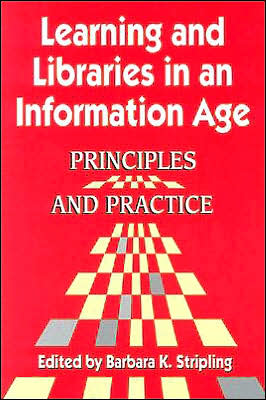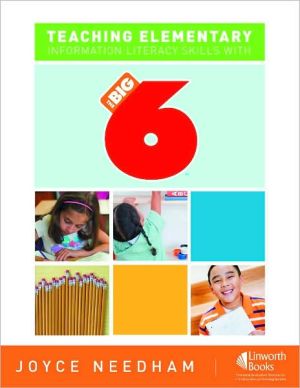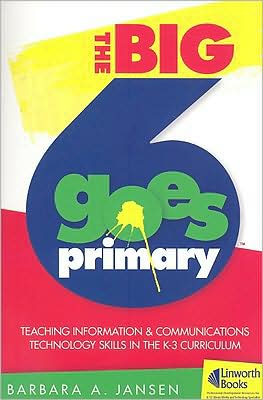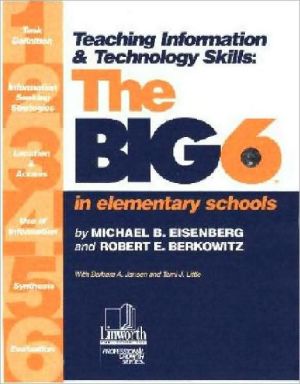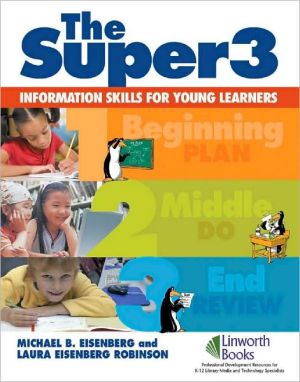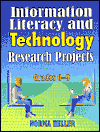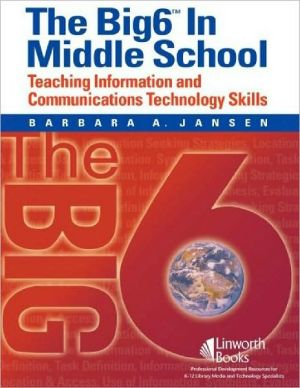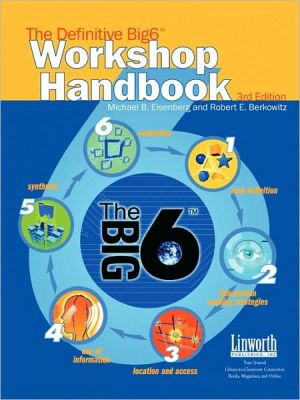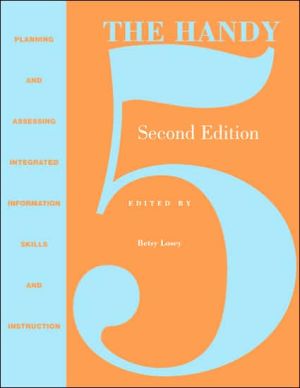Learning and Libraries in an Information Age: Principles and Practice
Blending the latest research and educational theory with sound and effective practices, this book shows you how to create a learning-centered library for the new millennium. Some of the most respected authorities in the field have contributed their ideas and expertise to this important work. For example, Carol Kuhlthau discusses student learning in the information age; Jackie Mancall writes about collection development; Sheila Salmon describes what the library media specialist brings to the...
Search in google:
Blending the latest research and educational theory with sound and effective practices, this book shows you how to create a learning-centered library for the new millennium. Some of the most respected authorities in the field have contributed their ideas and expertise to this important work. For example, Carol Kuhlthau discusses student learning in the information age; Jackie Mancall writes about collection development; Sheila Salmon describes what the library media specialist brings to the equation of standards-based learning; and Joy McGregor provides an informative article about learning theories and models. The result is a valuable combination of principles and implementation strategies for learning, information literacy, instructional design, library media program design, collaboration, teaching, collection development, assessment, and building communities of learning. Now is the time to step forward as an instructional leader and this is the book that will help you do it. A must read for libra VOYA First in the new Principles and Practices series to provide library media professionals "research and theory that are grounded in effective practice," this volume focuses on improving student achievement in information-age schools. After an overview of how technology and a proliferation of electronic information have changed education, several authors present information on learning models, factors of learning, and thinking. Several information-literacy-skills models—including the Big6, Pathways to Knowledge, Essential Skills, INFOhio DIALOGUE, Colorado and California Models, and AASL/AECT Standards—are presented, and the book discusses common components. Subsequent chapters examine learning in a technological context, access to information, safety and privacy concerns, ethical conduct, and expanded formats in distance learning, software, CD-ROMs, and Internet sites. Practical information is provided on meaningful assignments, the potential of digitized primary source documents, methods of assessment, developing lifelong learners, the need for collaboration, and the necessity of a paradigm shift from a traditional to a constructivist approach. Emphasizing that librarians must act as leaders in changing schools into communities of learning, the authors provide useful information about how to make those changes happen. Each chapter includes a bibliography of recent books, articles, and Web sites for readers wishing to learn more. This book achieves an admirable balance between theory and practicality, and it should be useful for both novice and experienced librarians. Index. Illus. Charts. Biblio. Source Notes. Further Reading. 1999, Libraries Unlimited, 375p, $35 Oversize pb.Ages Adult. Reviewer: Sherry York SOURCE: VOYA, October 2000 (Vol. 23, No. 4)
AcknowledgmentsIntroductionContributorsPt. IOverview1Ch. 1Literacy and Learning for the Information Age3Pt. IIContext of Learning23Ch. 2How Do We Learn?25Ch. 3Information Literacy Skills Models: Defining the Choices54Ch. 4Learning in a Technological Context83Pt. IIIContext of Collaborative Planning and Teaching131Ch. 5Collaboration in Teaching and Learning133Ch. 6Standards-Based Teaching in the Library Media Center163Ch. 7Creating Meaningful Assignments for Student Learning181Ch. 8Making Sense of a Changing World: Digitized Primary Source Documents in Schools196Ch. 9Assessment: A Tool for Developing Lifelong Learners206Pt. IVContext of Library Media Programs229Ch. 10Developing a Collaborative Access Environment: Meeting the Resource Needs of the Learning Community231Ch. 11Designing Library Media Programs for Student Learning260Pt. VConnecting to the Community297Ch. 12A Community of Learning for the Information Age299Pt. VIConnecting to Research325Ch. 13Student Learning: Linking Research and Practice327Index361
\ VOYAFirst in the new Principles and Practices series to provide library media professionals "research and theory that are grounded in effective practice," this volume focuses on improving student achievement in information-age schools. After an overview of how technology and a proliferation of electronic information have changed education, several authors present information on learning models, factors of learning, and thinking. Several information-literacy-skills models—including the Big6, Pathways to Knowledge, Essential Skills, INFOhio DIALOGUE, Colorado and California Models, and AASL/AECT Standards—are presented, and the book discusses common components. Subsequent chapters examine learning in a technological context, access to information, safety and privacy concerns, ethical conduct, and expanded formats in distance learning, software, CD-ROMs, and Internet sites. Practical information is provided on meaningful assignments, the potential of digitized primary source documents, methods of assessment, developing lifelong learners, the need for collaboration, and the necessity of a paradigm shift from a traditional to a constructivist approach. Emphasizing that librarians must act as leaders in changing schools into communities of learning, the authors provide useful information about how to make those changes happen. Each chapter includes a bibliography of recent books, articles, and Web sites for readers wishing to learn more. This book achieves an admirable balance between theory and practicality, and it should be useful for both novice and experienced librarians. Index. Illus. Charts. Biblio. Source Notes. Further Reading. 1999, Libraries Unlimited, 375p, $35 Oversize pb.Ages Adult. Reviewer: Sherry York \ SOURCE: VOYA, October 2000 (Vol. 23, No. 4)\ \ \ \ \ \ Library JournalThis book is the first in the publisher's new Principles and Practice series, which replaces School Library Media Annual and is intended to "provide practicing library media professionals with research and theory that are grounded in effective practice." It fulfills this goal admirably, combining a solid grounding in constructivist theory and inquiry-based learning with practical tips on revamping library media programs based on these theories. Throughout its six parts and 13 contributed chapters, the book emphasizes the role of the school library media specialist as full partner in the instructional program and the media center as the heart of the information-age school. Sections and chapters cover learning theories; collaborative planning and teaching with meaningful assignments and assessment; collection development; design of library media programs; community building; and more. Contributors are library and information science faculty, library media specialists, and other educators. Recommended for professional collections and students.--Janet Crum, Oregon Health Sciences Univ. Lib., Portland Copyright 2000 Cahners Business Information.\\\ \ \ School Library JournalThis collection of 13 essays from respected leaders in the field explores the structure and theory of the school library in the information age and looks ahead to its future changes. Some of the topics include learning theories and how they relate to library media practice, comparisons of several models for teaching information-literacy skills, collaborative teaching, standards-based teaching, and assessment of student learning. Each chapter provides a background in research and theory, then highlights effective practices and implementation strategies. An excellent resource, this volume is helpful both to librarians new to the field and seasoned veterans wishing to keep up with the times.-Yapha Nussbaum Mason, Brentwood Lower School, Los Angeles Copyright 2000 Cahners Business Information.\|\ \ \ \ \ BooknewsExplores the structure and theory behind the learning-centered library, where information literacy is an integral part of the instructional program. Six sections examine implementation strategies for the promotion of student learning, addressing learning methods, collaborative planning, the library media program, involving the community, and research connections, including Web tips. The editor is Director of Instructional Services for Fayetteville Public Schools. This work inaugurates a new series, replacing a previous series, School Library Media Annual. Annotation c. Book News, Inc., Portland, OR (booknews.com)\ \
